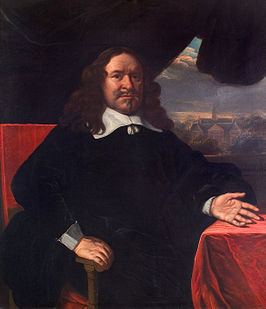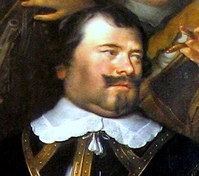Name Joan van | Role Political figure | |
 | ||
Died 1661, Amsterdam, Netherlands | ||
Joan Huydecoper van Maarsseveen (1599–1661) took over the family tannery business and the trade in pelts and armaments. The name Huydecoper means literally 'buyer of pelts'. Huydecoper had a prosperous political career: first he was elected to the vroedschap of Amsterdam. He was six times a mayor of Amsterdam.
Biography

Van Marsseveen was born in Amsterdam. In 1602, his father was an initial investor in the Dutch East India Company. He also had shares in the Magellan Company, that traded with South Americal. In 1622 his son bought a property in the Jordaan, where he had seven houses built; three along the Lauriergracht. Johan Huydecoper is mentioned as the first person in Amsterdam, who bought a painting from Rembrandt. Huydecoper and Rembrandt probably met each other at an early stage, as they both lived or worked in the Sint Antoniesbreestraat. Huydecoper became a connoisseur of fine arts and was friendly with Jan Vos (poet), who praised his house and collection of paintings in several poems, one on a painting by Rubens. In 1639, Philip Vingboons designed his mansion on Singel; the house was destroyed in 1943, when two English planes collided in midair and one came down on the house. (One of the few spots in Amsterdam that were damaged during the Second World War).
Huydecoper was also a real-estate developer along the river Vecht (Utrecht), where he had his country house. Schwartz wrote: What art could contribute to Maarsseveen: architecture to beautify it, map-making to advertise it, and poetry to immortalise it. He used the patronage he wielded in Amsterdam to put artists scholars, and publishers to work for him in Maarsseveen. In 1650, Huydecoper had the gates closed, the bridges lifted, and the city protected, when William II of Orange tried to attack Amsterdam. He was involved in the building and decoration of the new city hall on Dam Square.
During his office as a burgomaster, he chose the side of Cornelis de Graeff and made several diplomatic trips; in 1653 he went to Lübeck and he represented the city in 1655 at the baptism of the son of Frederick William of Brandenburg, and in 1660 at the coronation of Charles II of England.
Huydecoper symbolises the prosperity of Amsterdam during the Golden Age and managed to unify wealth, politics and the cultural elite status in Amsterdam. He was the father of burgomaster Joan Huydecoper II and father-in-law of Jan J. Hinlopen, an art collector.
